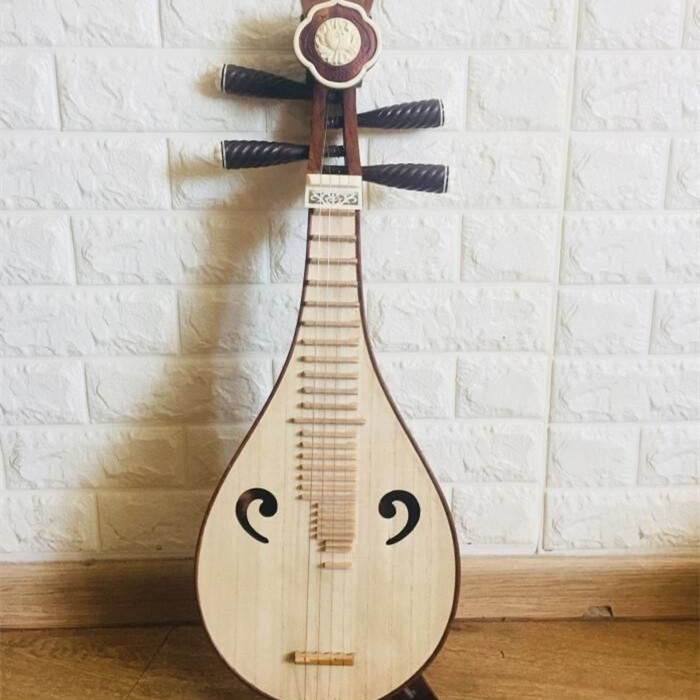Different forms of liuqin - seven-stringed liuqin
In the development history of liuqin for more than 200 years, various forms of liuqin have appeared, such as the original two-string liuqin, three-string liuqin, four-string liuqin, five-string alto liuqin, seven-string liuqin, and double-resonance box liuqin. The music art of Liuqin has been expanded, and the development space of Liuqin has been expanded.

Around 1980, Professor Chang Liyu, a master tutor of Liuqin performance at Shandong Art Institute, conceived and successfully developed the seven-stringed Liuqin in his years of teaching practice.
The seven-stringed liuqin was successfully developed on the basis of the four-stringed liuqin. Its appearance is slightly larger than that of the four-stringed liuqin. Because it has seven strings, it adopts a double-slot seven-shaft, and the seven pegs are installed in two grooves respectively. The four shafts look no different from the original liuqin, and the remaining three small shafts are guitar shafts, so that seven shafts can be installed, and the appearance is as beautiful as the original ukulele shafts. In order to keep the pronunciation balanced, the original body must be appropriately enlarged due to the number of strings, the thickness of the body must be appropriately reduced, and the original resonance cavity must be modified, thus maintaining the crisp and bright high-pitched tone of the ukulele. Change.
In order to prevent the seven strings from being squeezed together and unable to play, the mountain pass was widened so that the distance between the strings was 0.6-0.7 cm. In order to lay out the seven strings, the single trapezoidal code of the four-string liuqin was lengthened, and the single trapezoidal code was changed to a double trapezoid. size, while widening the fine-tuning width of the ukulele strings to fit the seventh strings. The tuning of the liuqin is not for the purpose of expanding the range, but the two-way tuning method is adopted on the basis of the original tuning to produce rich arpeggio effects. The tuning is d2 g1 d1 g d1 g1d2 . This two-way tuning means that it connects outward (right) to inward (left) as a pleasant arpeggio.
This liuqin retains the characteristics of the original four-stringed liuqin and increases the volume. It enriches the expressiveness and significantly changes the timbre of the bass. The arpeggio effect from high to low and then from low to high is the advantage and characteristic of the qixian liuqin in performance. In addition, it adds three strings, which can be used for both melody and accompaniment on the strings of the same pitch.
 渝公网安备 50010702504639号
渝公网安备 50010702504639号